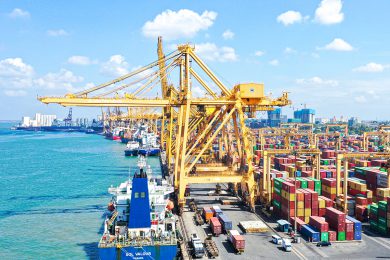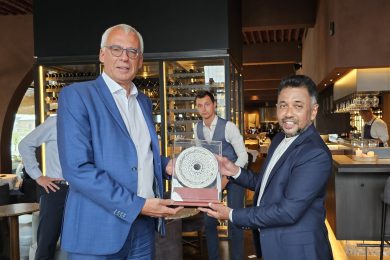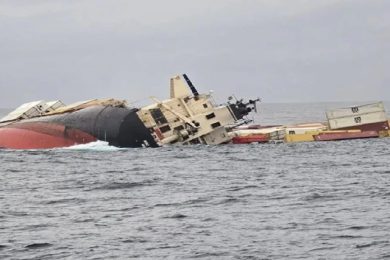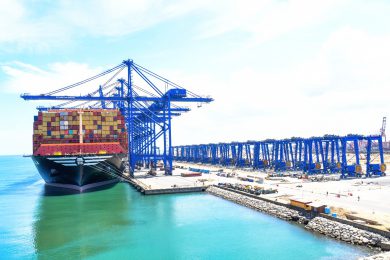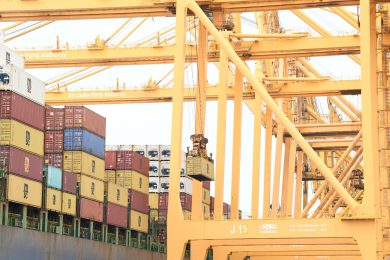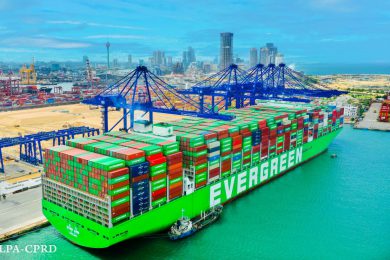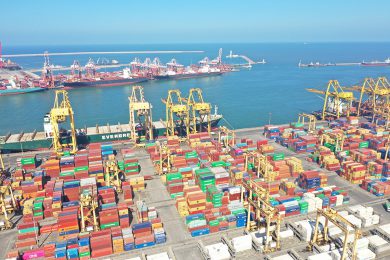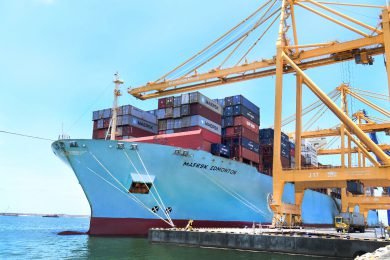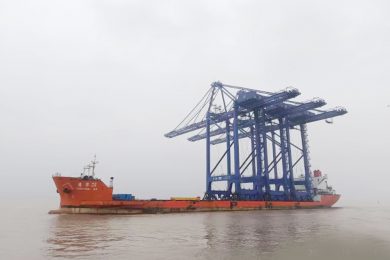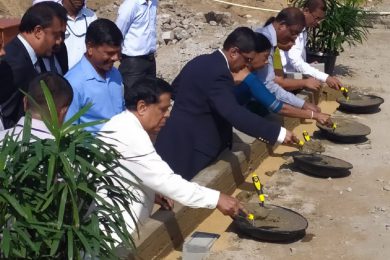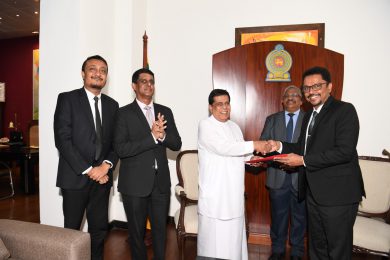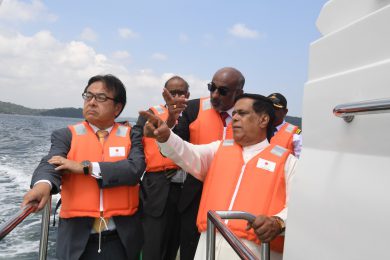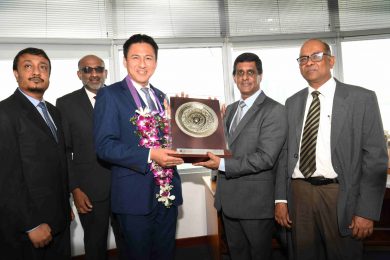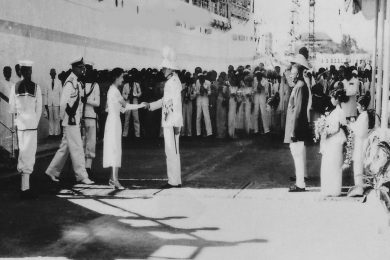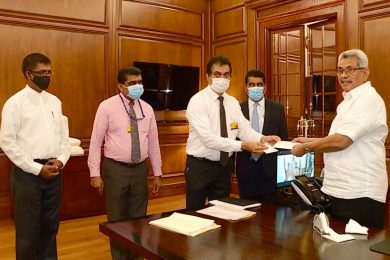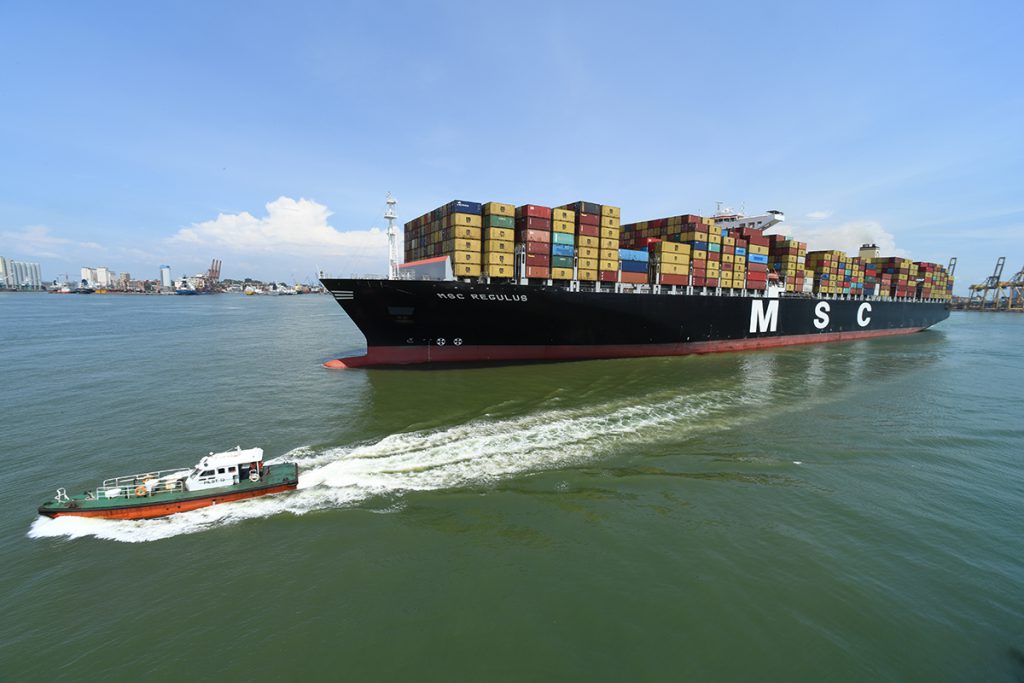In this interview, the Sri Lanka Ports Authority (SLPA) Chairman KavanRatnayaka sheds light on the future development plans of the Colombo Port and other related matters. Established in 1979, Sri Lanka Ports Authority is set to celebrate its 40th anniversary on August 01.
Mr.Kavan Ratnayaka completed his primary studies at Royal College in Colombo and then graduated from the University of California in USA.

Before being appointed as the SLPA Chairman, Mr. Ratnayaka led various government and private institutions including IBM, the Sri Lanka Tourism Development Authority and the Associated Newspapers of Ceylon Limited (ANCL).
Following are the excerpts of the interview;
Question (Q): Given the current situation in the country, are you satisfied with the steps taken to ensure the safety of the ports premises?
Answer (A): In the aftermath of the Easter Sunday attack, we have taken several steps to ensure the security of the Colombo Ports premises. But, even before the terrorist attack, we adopted various measures to streamline the security mechanism within the port. For instance, we particularly resorted to a more cautious policy, especially with regard to vehicles entering the port on a daily basis. After the attack on Easter Sunday, however, we worked closely with the security forces and implemented a comprehensive security plan. Although no pre-planned terrorist attacks have taken place in the country since April 21, we are not in a position to relax and be complacent about security.
Q:There are controversies surrounding the future development plans of the Port of Colombo including the Eastern Container Terminal. What is your take on this?
A: The Sri Lanka Ports Authority (SLPA) has 100% ownership of the Eastern Terminal under a memorandum of cooperation signed between the Governments of Sri Lanka, Japan and India. This is an agreement that will greatly benefit Sri Lanka and protect its national interests.
According to the signed agreement, we will obtain a loan from Japan at a highly concessionary rate to develop phase one and phase two of the Eastern Container Terminal. It is one of the best loans ever received by the Sri Lanka government. It comes at a 0.1% interest rate with a 40-year payment period and a 10-year grace period.
With this loan, the East Terminal project can be completed without further delay and generate more income for the Colombo Port. Sri Lanka Ports Authority (SLPA) will set up a Terminal Operating Company with India and Japan to handle the operations of the Terminal. We will own 51% shares of this company and any other party cannot secure control of the TOC. Therefore, the claim that this agreement will give the Eastern Terminal to a foreign country is an utter lie and a baseless allegation.
Q:What impact will the Colombo Port East Terminal have on the port’s employment?
A:ECT1 will generate about 500 new jobs and strengthen our human resources. Some politically-driven elements propagate a lie that it will result in loss of employment and make our human resources redundant. But the truth is quite the opposite. Similarly, the West Container Terminal (WCT 1) will also create another 500 new jobs. We, as management, With the development of Colombo Port, we will more and more better-skilled and better-trained workers who will further strengthen our human resources.
Q: For Sri Lanka to retain its competitiveness as a Trans-Shipment hub and with the lines upsizing their fleets, capacity needs to be added at a brisk pace. What plans does the SLPA have to increase capacity in Colombo?
A:The National Port Master Plan (NPMP), outlines a comprehensive 30-year plan to develop the capacity and efficiency of the Colombo Port based on business projections.
The plan includes the East Container Terminals (ECT I and II), the West Container Terminals (WCT I and II) and the JCT Modernization. By 2035 together with SAGT II Colombo should be ready for the projected business with a capacity of about 18 Million TEU’s.
We have also started the feasibility studies required for the North Port Project. As envisaged currently North Port should be ready by 2040 and add another 10 Million TEU’s.
The National Port Master Plan guides us with strategic plans to develop the port sector of Sri Lanka until 2050. The Board of Directors of the Sri Lanka Ports Authority Board has approved this plan, prepared with the assistance of the Asian Development Bank. The development projects that we have initiated are in sync with that plan. The National Port Master Plan specifically states that in the absence of the ECT I and II, the Colombo Port runs the risk of losing its hub states with shipping lines looking for better alternatives. We want to familiarize our workers with the content of this plan and therefore we have plans to translate this document into Sinhala and Tamil.
Q :How has technology and automation boosted the standing of SLPA?
A:A full-scale IT infrastructure drive is currently underway to transform Colombo into a Smart Port. We have allocated approximately a Billion Rupees for the project in 2019.
The smart port initiative will lay the groundwork for the longer-term transformation of all processes, which will touch everyone involved in the value chain. Once all the components are in place and working together we will be able to provide a level of service second to none in the world.
Q:India has been heavily investing in ports. Will this be a threat to Colombo as these ports may attract more ships there and divert TS traffic away from Colombo?
A:From what we see, India is preparing its ports and transport sectors to facilitate huge export growth through newly developed industrial zones closer to its ports. I see amazing potential to serve the Indian and other South Asian markets as a value-adding partner.
That is why we have decided to expedite decision-making with regard to port expansion. Sri Lanka is positioned well in the connectivity index and has a minimum deviation from the major shipping routes. With the right decisions and determination, we can capitalize on our strengths and support the regions growth aspirations and trajectory.
Q:What role do you expect the logistics and shipping industry to play in order to achieve the objective of maritime hub status?
A:Sri Lanka is positioned in the center of the Indian Ocean at the crossroads of international trade, making it ideally located to become a key regional logistics hub. Logistics sector will become more attractive through establishment of trade zones and accompanying policies and incentives. The government is working expeditiously in this regard appropriate trade policies and trade agreements. The private sector must come and make the correct investments now.
Value-added industries can transform Sri Lanka into an export-driven nation, making excellent use of its strategic geographical location. Also, Sri Lanka’s position as the 11th best-connected port in the world is a major boon to the logistics industry. We must push ahead with new Logistics Concepts and be reliable, quick and nimble.
Taking all this into consideration, I believe the logistics and shipping industry is at the heart of our plans for maritime hub status. Can be done, in my lifetime!
Q:How do modern concepts like clean, green and friendly harbour help the future of Colombo port?
A:The concept of a clean and green port is central to any efficient port striving to hold a competitive edge. In today’s world, a port cannot be developed simply by focusing on statistics. This is why we have introduced the concepts of ‘Clean Harbour’ and ‘Green Harbour’ as well as ‘Good Harbour’. A proactive management and a committed work force are vital to successfully implement these concepts. Especially when it comes to cleaning the port clean, employees at all levels have a critical role to play. I have also told the SLPA senior management it has to be a top-down approach.
Q:What is the current status of the Galle, Trincomalee and Kankesanturai ports development projects?
A:They are also being developed in line with the National Port Master Plan. Steps have been taken to develop Galle Port as a leisure port while preserving its historic value. A comprehensive development project aiming to develop the Kankesanturai Port as a commercial port has begun with the assistance of the Government of India. A similar expansion project is underway at the Trincomalee harbour and Japan has provided a grant to install night navigation at the port making it operational 24/7.
Q:Established in 1979, the Sri Lanka Ports Authority is setting up to celebrate its 40th anniversary soon. How do you look at the four decades-long journey of this premier authority of Sri Lanka’s maritime industry?
A:The SLPA is the lifeline of our economy and one of the key institutions concerning the national economy. It has a proud history and a highly committed work force that has rendered an invaluable service to the institution. Over the years, Sri Lanka’s ports sector has achieved many international recognitions and accolades speaking volumes of our potential to be a global leader in the maritime industry. Hence, it is our duty today to make the right strategic decisions to ensure the sustainability of this business and ensure that we hand over a stronger and richer institution to the next generation.
2019.07.31



